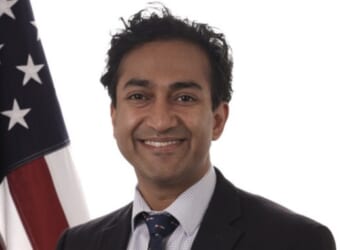The political landscape in this off-year election cycle is littered with examples of authoritarianism, discord, violence, and murder. In New York City, the leading candidate for mayor in next month’s election promises socialism for the Big Apple. In Virginia, the Democrat running for attorney general envisions shooting a Republican lawmaker in the head. He also expressed a desire for the lawmaker’s young children to die in their mother’s arms.
In Chicago, mobs attack law enforcement officers for the sin of enforcing the law. A sniper in Dallas aimed for U.S. immigration officers but instead killed two migrants being processed for deportation. Last weekend, there were some 2,600 No Kings street protests, funded in part by George Soros, and other socialist and communist organizations.
Earlier this year, Charlie Kirk was assassinated in Utah. Independent journalists were beaten and arrested in Portland, Oregon. Self-identified socialists and communists emerged as political candidates in Maine, Minnesota, and Washington state. This is just a sampling of how these ideologies are metastasizing from coast to coast.
This is unprecedented in the living memory of America, but in many ways, this behavior parallels historical examples of what happens in an environment of political extremism. The world’s preeminent extremist event happened 108 years ago this weekend—the Bolshevik Revolution of Oct. 24-25, 1917, the Julian calendar date of the era.
The driving force behind implementing the most murderous political ideology in human history was Vladimir Lenin. A theoretician, practitioner, and prolific writer, reading his often-tortured prose reveals remarkable similarities between current events and Lenin’s vision of Soviet Communism.
“Not a single problem of the class struggle has ever been solved in history except by violence,” said Lenin in his January 1918 speech to the Third All-Russian Congress of Soviets. “When violence is exercised by the working people, by the mass of exploited against the exploiters—then we are for it!”
One can’t help but think Lenin would approve of the violent mobs taking over the streets of Chicago, Portland and elsewhere.
Lenin advocated this form of agitation long before the October Revolution. “We supported the use of violence by the masses against their oppressors, particularly in street demonstrations,” said Lenin in his November 1916 remarks at the Congress of the Social-Democratic Party of Switzerland. “We sought to bring to the whole country the lesson taught by every such demonstration.”
The socialist/communist sponsorship of the Oct. 18 No Kings protests is no coincidence; it reflects Lenin’s goal of bringing agitation to the whole country.
Street violence was essential to achieving Lenin’s vision, but so was cleansing the party of those less enamored of it. In a 1911 essay titled “The Career of a Russian Terrorist,” Lenin wrote, “Only the organization of this class (proletariat) and the exclusion of petty-bourgeois ‘fellow-travelers’ from its party, and the elimination of the vacillation, weakness, and lack of principle characteristic of them, can again lead.” (Italics in original)
This philosophy might account for the nascent effort to oust moderate Pennsylvania Democrat Sen. John Fetterman. The same might be said of the pressure applied to New York Sen. Chuck Schumer by leftists like Rep. Alexandria Ocasio-Cortez and Sen. Bernie Sanders to endorse socialist Zohran Mamdani for mayor of New York City. It could also explain why Schumer is bending to the will of the increasingly leftist voter base he needs for reelection next year. The man has been put on notice that he’s not sufficiently radical.
By August 1918, Lenin was done pussyfooting around. “You need to hang—hang without fail, and do it so that the public sees—at least 100 notorious kulaks, the rich, and the bloodsuckers,” read Lenin’s urgent telegram to his commissars in the town of Penza. “Publish their names. Take away all of their grain. Execute the hostages.” Three weeks later, he unleashed the Red Terror, his systematic program of murder that left 200,000 dead. Thus far in America, we’ve only seen a few political murders, but recall the words of Chinese philosopher Lao Tzu: “A journey of a thousand miles must begin with a single step.”
Russia’s nightmare didn’t happen overnight; it took one generation to evolve from the youthful musings of an exiled Marxist to mass murder. But harbingers of this political radicalism surround us, and they should concern us all. In his 1917 tome “The State and Revolution,” Lenin opined on how socialism is an intermediate phase preceding the ultimate goal of communism. His dream is more than a century old, but there are very many Americans who want to retrieve Lenin’s ideas from the ash heap of history and implement them here, today.
In the parlance of the épéeist, en garde.
We publish a variety of perspectives. Nothing written here is to be construed as representing the views of The Daily Signal.











